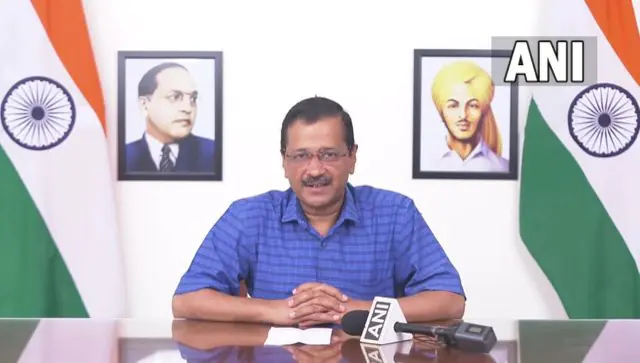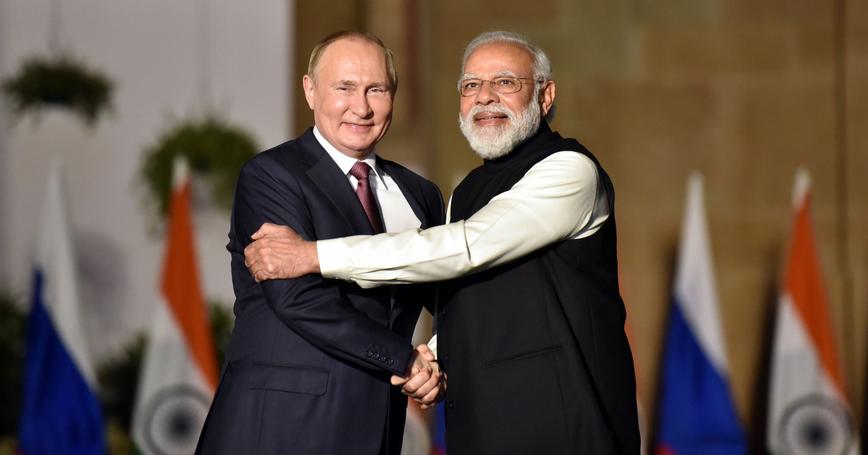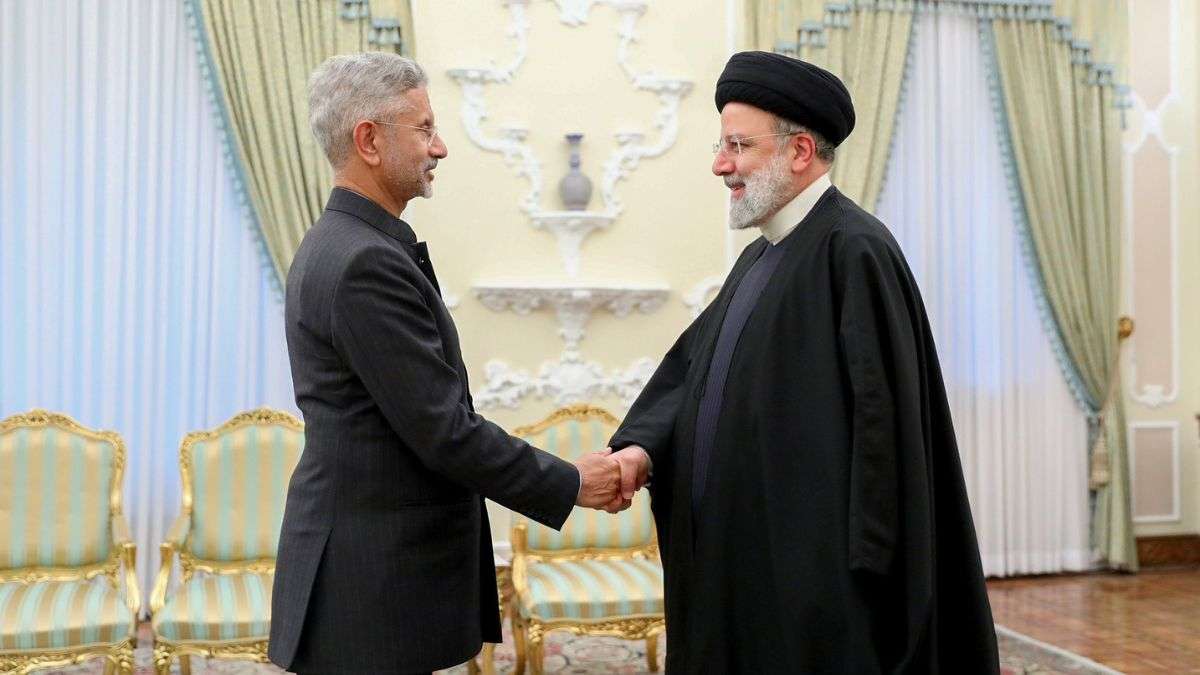Gujarat Assembly polls: How Arvind Kejriwal is trying to woo voters by bringing his Punjab and Delhi models together

- Reporter 02
- 23 Aug, 2022
Gujarat Assembly Election is coming up, and the political heat is already high. With the entry of Delhi chief minister Arvind Kejriwal's Aam Aadmi Party, this time Gujarat is all set to witness a different kind of political battle beyond the usual fight between the Bharatiya Janata Party and the Congress party. With the Aam Aadmi Party (AAP) emerging as a crucial player, the key political discourse in Gujarat assembly elections has become the politics of freebies, which is the basis of Kejriwal‘s election pitches. Meanwhile, the AAP is campaigning saying that these are crucial welfare schemes and not freebies.
However, the Gujarat assembly elections are about more than just the AAP's freebie battle. It is a battle to prove the importance of the AAP, to become the most credible contender of the BJP and also to become recognised as a national party. Arvind Kejriwal understands that if they win some seats in Gujarat, then it would be the biggest challenge posed to Prime Minister Narendra Modi as he is synonymous with the state and politics of Gujarat.
For Kejriwal, this Gujarat election is also an opportunity to bring both his so-called Delhi and Punjab model of governance together. While the promises or guarantees of free electricity and better education are on the plate, Kejriwal is also focusing on different communities like women, the MSME business community and tribals. This is a learning from his success in Punjab.
What is the significance of AAP’s monthly allowance to women guarantee?
From the experience of Delhi and Punjab, the AAP has realised that women play a key role in their victory.
In the 2020 Delhi assembly elections, according to a survey conducted by Lokniti–CSDS, 60 per cent of women voted for the AAP and 49 per cent of men voted for the AAP. This gender gap of around 11 per cent played a significant role in the victory of the AAP.
In Delhi, the Aam Aadmi Party experimented with schemes like free bus travel for women and CCTV cameras in every locality in a bid to decrease crime against women. Similarly, several political analysts have observed that free electricity, water, and other welfare schemes directly affect women voters.
Women turned out in greater numbers in several assembly constituencies in Punjab, where the Aam Aadmi Party won a historic victory. Arvind Kejriwal promised a similar allowance scheme for women during the Punjab elections.
In several other states, women voters played a key role in the victory of the political parties. For example, in Bengal, Mamata Banerjee enjoys humongous support among women voters. She has a scheme of a similar kind named "Lakshmi Bhandar". The Bengal chief minister and TMC supremo announced this scheme before the 2021 Bengal assembly elections. By this government scheme, every woman head of the family who belongs to the general category gets Rs 500 per month and Rs 1000 for the women in the SC-ST category. According to political analysts in Bengal, Mamata Banerjee received massive support from female voters as a result of this scheme.
The AAP in Gujarat has promised a thousand rupees as an allowance to women above 18 years. Arvind Kejriwal is targeting the female population of Gujarat, which is around 48 per cent, whereas the population of men is around 52 per cent.
A senior AAP leader who is closely working on the Gujarat campaign said, "The AAP believes in women's empowerment. From our experiences in Punjab and Delhi, we have learned that women have tremendous faith in Arvind Kejriwal. The opposition is misinterpreting this scheme as a freebie, but we believe it is the right of every woman because this money is theirs."
Why AAP is focusing on tribal voters
From the experience of Punjab, the AAP has learnt that focusing on communities helps in winning elections. Before the Punjab elections, the AAP started talking about the legacy of BR Ambedkar. Across Delhi, Arvind Kejriwal announced the grand celebration of the 131st birth anniversary of BR Ambedkar. This was part of his larger strategy to assert that Dalits of Punjab that the Arvind Kejriwal-led Aam Aadmi Party is beside them.
Then onwards after the victory in the Punjab assembly elections, Kejriwal maintained the party‘s new reach out toward BR Ambedkar. Currently, the AAP leaders, the chief ministers, MPs and every other important functionary keep only the image of BR Ambedkar and Bhagat Singh at their offices. These are all targeted community reach-out strategies.
The AAP under the leadership of Kejriwal is trying to apply the same kind of politics in Gujarat. The state has around 16 per cent tribal population. According to Census, the population of tribals in Gujarat is concentrated in districts like Panchmahal, Dang, Kutch etc. The Aam Aadmi Party has initiated a strong tribal Beach by joining hands with Bharatiya Tribal Party in Gujarat (BTP).
Noted social historian Badri Narayan in his column Political Matrix wrote, "Tribal politics in Gujarat, however, never developed in isolation; it evolved with the politics of national parties like the BJP and the Congress." Chhotubhai Vasava’s BTP marks a shift – it shows the emergence of a separate tribal identity-based political party in the politics of Gujarat. Arvind Kejriwal-led AAP, a new entrant in Gujarat politics, has formed an electoral alliance with BTP. Recently, the BJP government inducted four ministers from the ST community in its newly formed 25-member council of ministers.
Kejriwal has already announced a six-point guarantee for the tribals. And one of the most crucial promises is the implementation of the Panchayat (Extension to the scheduled area) Act 1996. This has been one of the most crucial issues in the tribal regions of Gujarat.
It is interesting to note how Kejriwal has mixed the Delhi model of education with this community reach which the AAP has learnt from the Punjab elections. Kejriwal has promised tribal universities, state-of-the-art tribal education centres and so on.
How Is AAP reaching out to MSME community?
The AAP did well in the civic polls of Surat and Gandhinagar municipal corporations, which were in the urban areas of Gujarat. The urban voters of the state play a crucial role in electoral politics. This is why the Aam Aadmi Party has been trying to reach out to the middle and small business class communities. For example, Arvind Kejriwal has already held three town halls in just 10 days with MSME industrialists. Kejriwal met with these industrialists at Rajkot, Jamnagar and Ahmedabad.
The AAP chief also made several guarantees to the community. For example, finishing Raid Raaj, clearing the pending VAT rebate claims, simplification of GST process, ending VAT rebate claims, simplification of the GST process, ending corruption, and so on.
Such a reach-out programme is also based on the Aam Aadmi Party‘s learning from the Punjab assembly elections. The elections in Punjab took place after the massive farmer protest, and the Aam Aadmi Party gave a concentrated focus on support for the issues of farmers in Punjab. This focus on the farmers worked magically for the party in the assembly elections.
Leave a Reply
Your email address will not be published. Required fields are marked *











